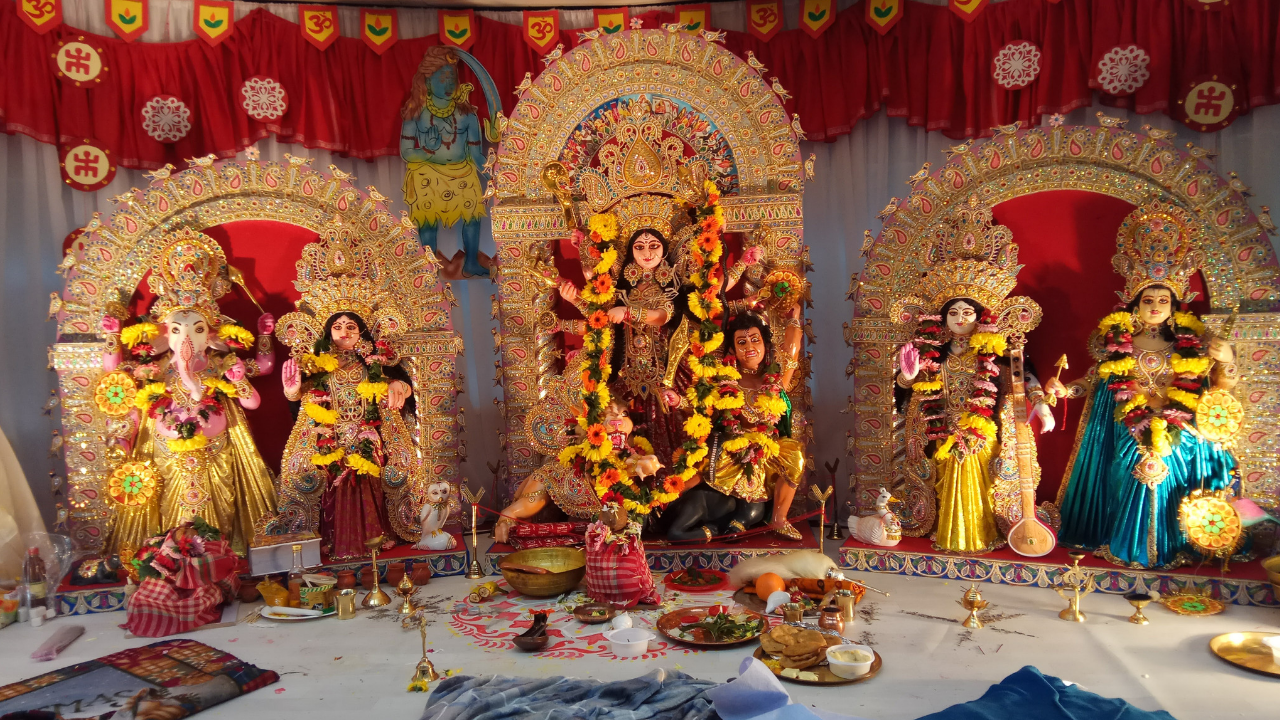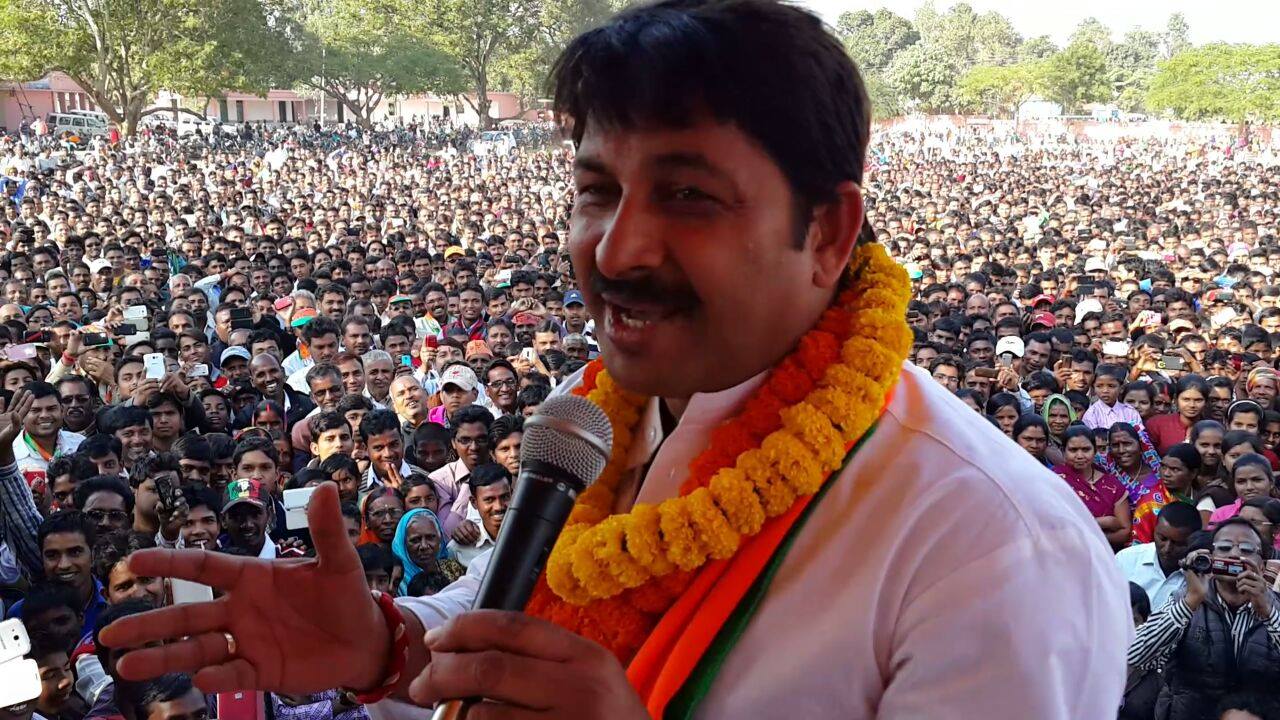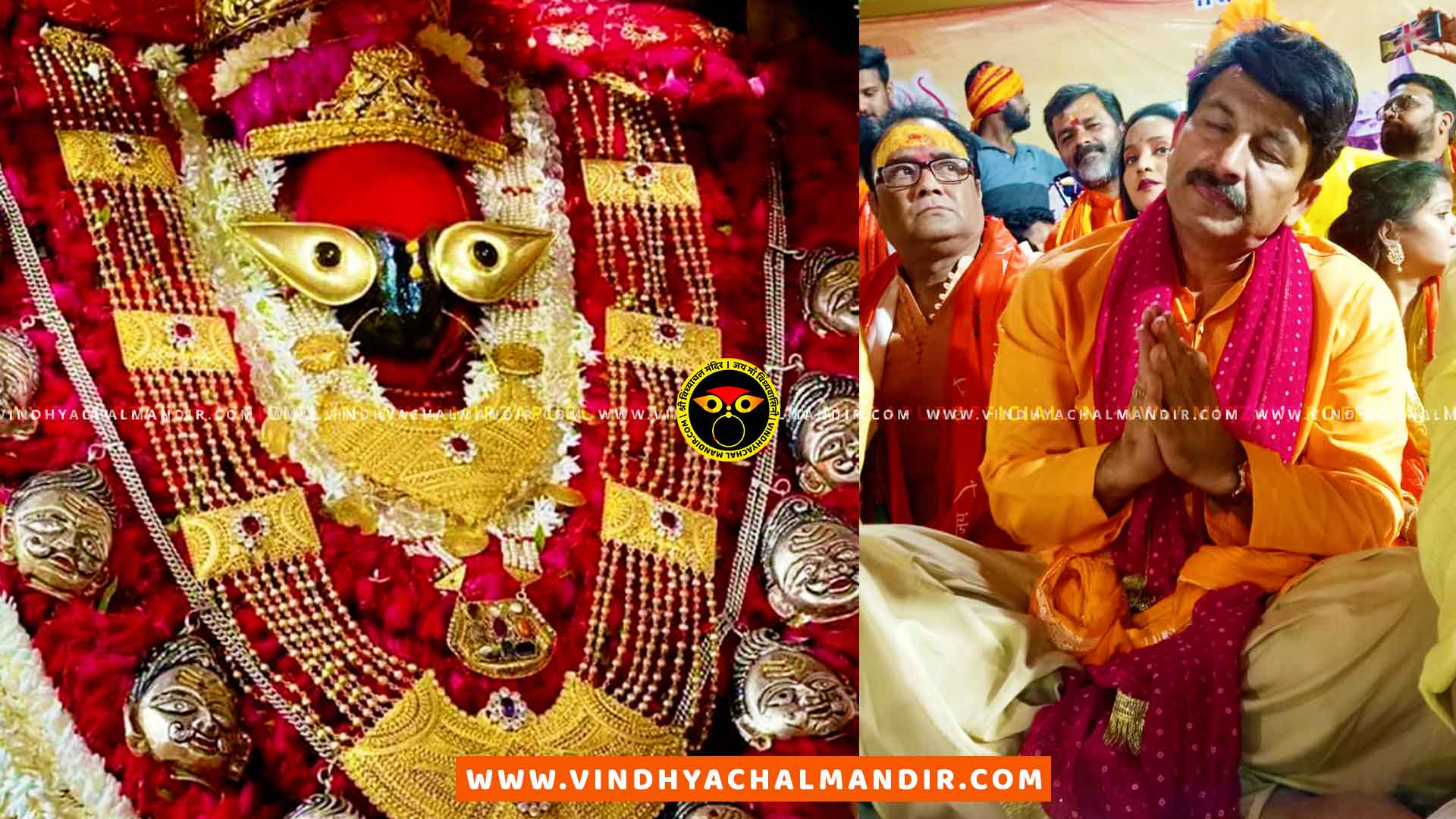Vindhyachal is a beautiful and sacred place located in Uttar Pradesh. The town is believed to be the abode of the divine Aadi Shakti and worships the feminine trinity of Maa Druga, Maa Kali, and Maa Saraswati.
Table of Contents
The town is famous for its beautiful temples spread across Vindhya Hill. The Maha Trikon Parikrama is a pilgrimage that takes visitors on a journey to the divine triangle, visiting the three temples on the hill.
The first temple on the hill is the Kalikhoh temple. This ancient cave site is dedicated to Maa Kali and is believed to rejuvenate the devotees’ innate good qualities to surpass negative traits. The temple is surrounded by a forest, where black-faced langur monkeys can be seen socializing and sunning themselves. Visitors can indulge them with jaggery, fruit, and peanuts. The steps behind the Kalikhoh temple lead to a trekking route to Ashtabhuja temple, the third tangent of the expression of feminine divinity in Vindhyachal.
The Ashtabhuja temple is located in a cave on Vindhya Hill. The temple entrance is low, requiring devotees to bend in surrender and devotion when they enter. The exit is high, allowing them to leave with their heads held high, reassured by the eight-armed Ashtabhuja Devi’s loving care and protection. The temple is approx 222 steps up, and the sound of Nagara drums played in the temple premises echoes through the hillside to lead visitors.
The road to Ashtabhuja is as beautiful as the temple and offers a panoramic view of the hillside accompanied by the stunning River Ganga at its base. Bharat Kund and Sita Kund near Ashtabhuja temple bubble with sweet spring water and tempt visitors to play in the water as joyously as children.

The second temple on the hill is the Maa Vindhyavasini temple. The temple is a colorful display of mini-India during biennial 9-day Navratri celebrations after Holi in March-April and before Dushehra in October-November. Winding lanes decorated with stalls from far and wide amidst the music of the classical, folk, and Jagran variety expose visitors to melody and devotional feelings intertwined most beautifully.
Behind the Kalikhoh Temple is the Bhairo Temple, from where steps lead to a trekking route to the Ashtabhuja Temple, the third tangent of the expression of feminine divinity in Vindhyachal. Ashtabhuja Mandir is recorded in the ancient Puranas as a cave in the Vindhya Hill, and her temple entrance here is low so that devotees bend in surrender and devotion when they enter. The cave is approx 12 feet in diameter, and Maa Saraswati is worshipped here.

Apart from these famous temples, Vindhyachal has many other significant religious sites that attract visitors nationwide. Ramgaya Ghat and Taradevi Temple are located 2 km west of Vindhyachal, near Shivpur’s Ganga Ghat of Pauranic importance. Lord Ram offered prayers here for peace for his deceased father. Akrodh Rishi, who had won over anger thanks to divine grace, established the Akori Temple west of Vindhyachal. Bhairav temples abound in the Vindhya circuit and are guards of the divine mother.
Vindhyachal-cum-Mirzapur is also known for its vibrant music and cultural traditions. The Kajali competition, which takes place during the Hindu month of Jyeshtha (June), is one of the biggest draws for the town’s residents. The competition involves local singers and musicians performing folk songs praising the Goddess Vindhyavasini.
Vindhyachal is also known for its rich musical traditions. The town has produced many renowned musicians & singers like Manoj Tiwari, Malini Awasthi, Mantu Mishra, and Sanjay ‘Sureela’ including Pandit Chhannulal Mishra is also associated, who is considered one of the finest exponents of the ‘Benaras Gharana’ of Hindustani (Indian) classical music.

In addition to its religious significance, Vindhyachal is also known for its natural beauty. The town is located on the banks of the River Ganges and offers a panoramic view of the hillside. Bharat Kund and Sita Kund near Ashtabhuja Temple bubble with sweet spring water and tempt even adults to play in the water as joyously as children.
In conclusion, Vindhyachal is a town of great historical and cultural significance. Its magnificent temples, scenic beauty, and cultural diversity make it a must-visit destination for devotees and tourists alike. The town has a rich history and is associated with many mythological legends.
Which part of Sati fell in Vindhyachal?
There are different versions of the story, but according to one belief, none of the body parts of Sati fell at the place where the current temple of Vindhyavasini is located.
What is the story behind Vindhyachal Temple?
According to Hindu mythology, the Vindhyachal Temple is associated with the story of the Goddess Durga and the demon Mahishasura. It is said that Mahishasura, who was half-man and half-buffalo, had obtained a boon from Lord Brahma that no man could kill him. Overconfident with his new powers, he began to wreak havoc on the world, even threatening the gods themselves.
To stop his tyranny, the gods created the goddess Durga, who was given divine weapons and powers to defeat Mahishasura. The battle between the two raged on for days until finally, Durga managed to slay the demon. It is said that Mahishasura’s head fell at the spot where the Vindhyavasini temple now stands, thus making it a holy site for devotees of the Goddess.
Another legend associated with the temple is that the goddess Ashtabhuja, a form of Goddess Mahasaraswati and sister of Lord Krishna, had taken refuge here after escaping the clutches of the demon king Kansa, who wanted to kill her.
What are the three temples in Vindhyachal?
There are several temples in Vindhyachal, but the three main temples are:
Vindhyavasini Temple: This temple is dedicated to the Goddess Durga, also known as Vindhyavasini. It is considered to be one of the 51 Shakti Peethas of India.
Kali Khoh Temple: This temple is located in a small cave dedicated to Goddess Kali, the fierce form of the Goddess Durga.
Ashtabhuja Temple: This temple is on a Vindhya mountain and dedicated to Goddess Saraswati. The temple is also known as the temple of Maa Ashtabhuja Devi. According to mythology, Ashtabhuja was the sister of Lord Krishna.
What is the importance of Vindhyachal Mandir?
Vindhyachal Temple is considered one of the 51 Shakti Peethas, as it is believed that the temple is where the Goddess Sati’s non of body parts had fallen; here the whole deity of the Goddess is seen. The temple is dedicated to the Goddess Vindhyavasini, another form of the Goddess Durga. The temple is also a popular pilgrimage site for Hindus, especially during Navratri, when thousands of devotees flock to seek blessings from the Goddess. The temple complex also includes temples like Ashtabhuja Devi and Kali Khoh Temple. The location of the temples on top of hills also adds to its significance, as it is believed that the hills are a source of spiritual energy and meditation. Additionally, the temple complex is surrounded by scenic beauty, with the holy Ganges river flowing nearby, making it a popular tourist destination.
Which Shakti Peeth is on Vindhyachal?
The Vindhyavasini Devi Temple in Vindhyachal is considered one of the 51 Shakti Peethas in Hindu mythology. It is believed that the temple is where the Goddess Sati’s non of body parts had fallen; here, the whole deity of the Goddess is seen, whereas in other Shaktipeeths, different parts of the Goddess are worshipped in symbolic form.
Is Vindhyachal a Shakti Peeth?
Vindhyachal is considered one of the 51 Shakti Peethas in Hindu mythology. The Vindhyavasini Devi Temple in Vindhyachal is believed to be where the Goddess Sati’s whole body had fallen, unlike other Shakti Peethas, where different parts of the Goddess are worshipped in symbolic form.
